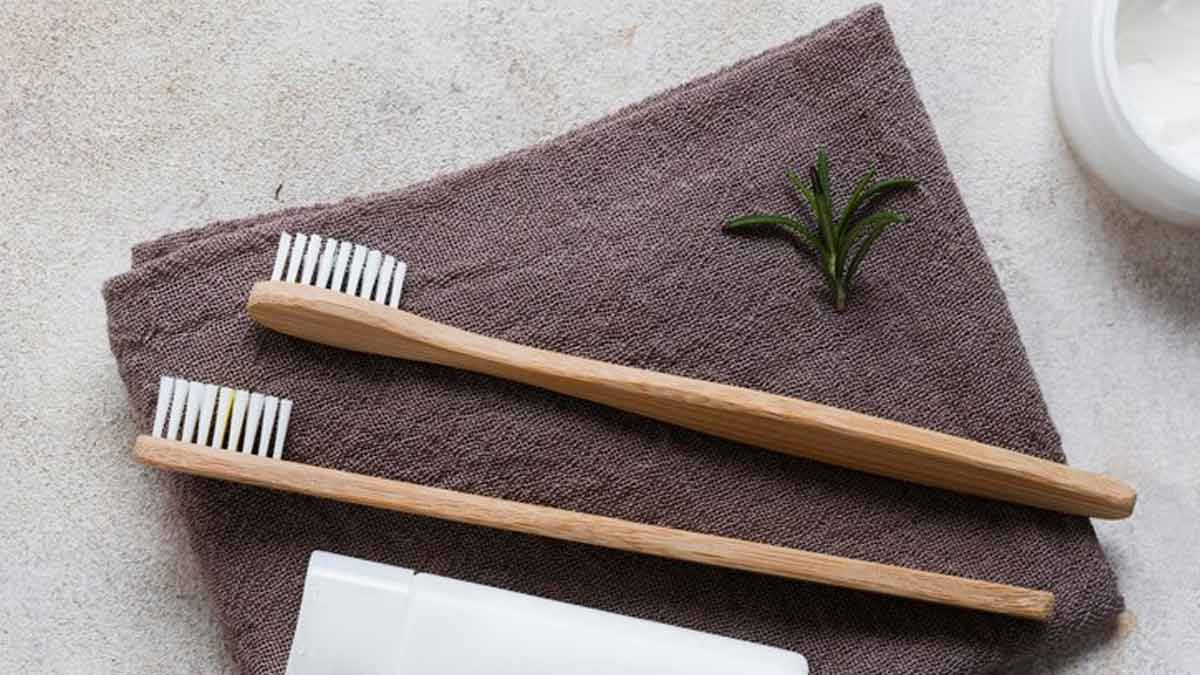
Maintaining oral hygiene is essential for preventing tooth decay, gum disease, and bad breath. Oral diseases are one of the most common issues faced by nearly 3.5 billion people worldwide, according to the World Health Organization (WHO). One of the primary causes is poor oral hygiene, which is why experts recommend regular brushing, at least twice a day, with fluoride-containing toothpaste, as per the WHO. But that's not all. Proper toothbrush care is also important to maintain oral hygiene, as there is always a risk of bacterial contamination on the toothbrush. This is why you must consider keeping your toothbrushes clean and replacing them when it's time. Here's what you need to know.
Table of Content:-
Also Read: Expert Explains The Importance Of Brushing For Good Oral Health
How Brushing Helps Maintain Oral Hygiene
Brushing is the simplest way to keep your teeth and your mouth clean and refreshed. But the benefits go beyond that.
Regular brushing is a great way to keep the plaque away. Plaque is a soft, sticky bacterial coat that forms on teeth, which, if left unmanaged, can lead to tooth decay or cavities. Brushing helps remove this plaque, preventing it from hardening into tartar or calculus, which can only be removed by a dental professional.
Plaque buildup can also contribute to gum disease, like gingivitis (inflammation of the gums) and more severe forms of periodontal disease.
Interestingly, the time spent on brushing can also impact the efficiency of plaque removal, according to a study published in the Journal of Dental Hygiene. Researchers found that more brushing time removed more plaque, with brushing for 3 minutes removing almost double the amount as brushing for 30 seconds. The study concluded that we brush for longer, aiming for at least 2 minutes, to effectively remove plaque and get the most from brushing.
It is also important to note that bacteria in the mouth can produce sulphur compounds, contributing to bad breath. Hence, brushing is a great way to eliminate the possibility of the same.
How Often Should You Replace Your Toothbrush?
According to the US Centers for Disease Control and Prevention (CDC), an individual should change or replace their toothbrush every 3 to 4 months or whenever the bristles look worn out.
Not following the guidelines or continuing to use toothbrushes with worn-out bristles can lead to ineffective cleaning of your teeth, and because they can't reach all the nooks and crannies of your teeth, they can leave behind plaque. In addition, inefficient brushing can also allow germs to build up and spread, contributing to poor oral hygiene.
Also Read: Brushing Before Or After Breakfast: Dentist Explains Which Is Better
Toothbrush Care Tips
Here are some CDC-recommended tips to care for your toothbrushes:
- Avoid sharing your toothbrushes, as they carry germs that don't go away even after rinsing.
- After brushing, rinse your toothbrush with water until it is completely clean, let it air-dry, and store it in an upright position.
- If more than one brush is stored in the same holder, do not let them touch each other.
- Do not soak toothbrushes in disinfecting solutions or mouthwash.
- Do not cover toothbrushes or store them in closed containers, as they can cause bacterial growth.
Conclusion
When it comes to maintaining your oral hygiene, it is important to brush your teeth regularly. But in addition, you must also know when to replace your toothbrush and how to take care of it. The CDC recommends changing your toothbrush every 3 to 4 months or when the bristles wear away, whichever is earlier. It is also important to keep your toothbrush clean and prevent the growth of bacteria, as it can increase the risk of infection.
Also watch this video
How we keep this article up to date:
We work with experts and keep a close eye on the latest in health and wellness. Whenever there is a new research or helpful information, we update our articles with accurate and useful advice.
Current Version